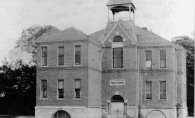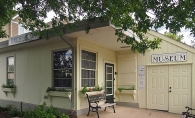One of the reasons many Scandinavian immigrants left northern Europe for Minnesota was to escape the rampant drinking fueled by home stills back in the Old World. This split between the “Wets” and the “Dries” played out across Minnesota and even in Excelsior, where the “Wets met in the Fred Hawkins Hotel,” according to local historian Bob Williams, who pointed out the painted sign on Water Street. “The Dries met in church.”
The battle heated up in 1883 when James J. Hill celebrated the completion of a railway with a thousand guests at the Hotel Lafayette (near the current Lafayette Club), including ex-President Ulysses S. Grant and environmentalist John Muir. The elegant evening was interrupted by the drunk kitchen staff who imbibed on the good hootch and began throwing plates. The former president was whacked with a pie plate.
This debacle embarrassed Hill and rallied the Temperance movement to enforce the laws around the lake that allowed only beer and wine, but nothing served by the glass (in other words: booze). Police booked the Hotel Lafayette’s bartender several times for ignoring the rules. This elite crew, however, succeeded in keeping the liquor cabinets filled.
Then the streetcars arrived, thanks to Thomas Lowry who envisioned Lake Minnetonka as a playground for everyone, not just the crème de la crème. The well-heeled sometimes shunned the riff-raff picnicking on Big Island who often brought bottles of beer. Established residents feared that Excelsior would become a haven of taverns just as had happened to White Bear Lake on the other side of Lowry’s trolley line.
With the line between decency and debauchery drawn, the Prohibitionists gained steam in western Minnesota as Congressman Andrew Volstead from Granite Falls sponsored the Volstead Act in October 1919, providing the 18th Amendment to the Constitution to outlaw liquor. Soon, doctors began prescribing alcohol, especially cognac, to reduce fevers.
Minnetonka kept its reputation for fun as illegal watering holes popped up, such as the speakeasy in the basement of politician Martin Smaby on Priest’s Bay with a secret buzzer in the coat closet to get inside and rumors that the Andrews Sisters would play another surprise concert.
By 1934, Prohibition and the Temperance movement had failed dramatically and soon the booze flowed again. As Charles Walker wrote four years after the repeal of 18th Amendment: “Statistics show that Minnesota drinks more beer in a year than Kansas does in a decade.”









